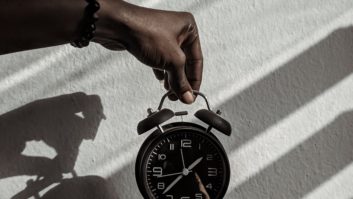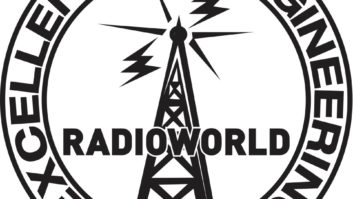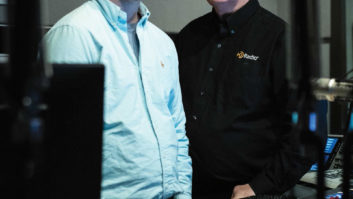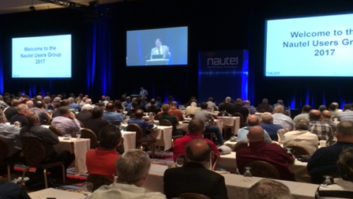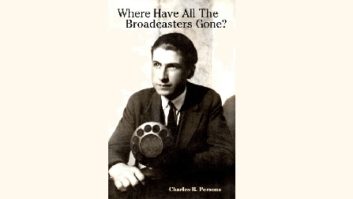James Careless’ piece on AM DXing in the April 21 issue of Radio World brought back a lot of memories about the magic of long-distance radio that I experienced in growing up in the 1950s and ’60s in a small southern town.
I think that it may be difficult for many of today’s readers to imagine the cultural isolation that existed half a century or so ago in America’s smaller rural communities. There was, of course, no HBO, CNN or other specialty cable networks; no Internet; not even fax capability for the general public. My little burg sported a single 250 Watt AM “Class IV” station that kept “specified hours” (meaning they usually signed off at 6:30 p.m., unless a sporting event or other activity that ran beyond that time).
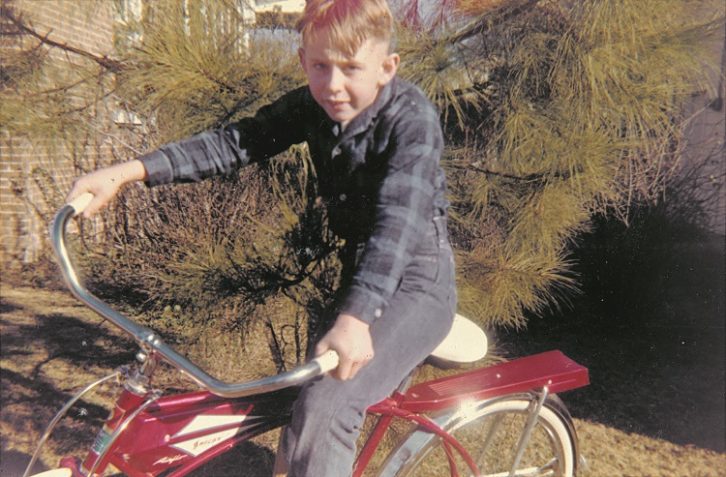
How wonderful it was — once the sun went down — to reach out through the magic of skywave radio and sample what the nation’s clear-channel stations had to offer. It certainly was not the packaged schlock that universally passes for programming in this day and age.
Peanut whistles and border blasters
During the school term, I had a daily routine, starting my homework with music provided by the local “peanut whistle,” which operated on 1490 kc. Once the “Star Spangled Banner” had been played, it only took a slight nudge of the dial to locate Nashville’s WLAC (“a broadcast service of the Life and Casualty Insurance Company”) on 1510 and hear the likes of “John R” or “Hossman Bill Allen” pounding out a variety of music that wasn’t mainstream at the time: rhythm & blues. I still remember all those jive-talk spots for Randy’s Record Shop located in Gallatin, Tenn., Silky Straight hair pomade and White Rose petroleum jelly.
If I tired of John Lee Hooker, Fats Domino, B.B. King and the rest of the R&B crowd, I could move down the dial a bit and snag the latest in top 40 from Chicago’s WLS and Dick Biondi, who made cracks about everything around him including the WLS “Radar Eye” (a hole in the wall, according to Biondi).
If the wind wasn’t blowing quite right to bring in Chicago, it was an easy change to 710 and WHB (“home of the World’s Happiest Broadcasters”) where I could catch Johnny Dolan (“you’re rollin’ with Dolan”) and his record show.
The only other top 40 available at night was from WNOE, which broadcast from “529 Bienville Street in the French Quarter in New Orleans.” However as NOE operated on 1060 kc and ran a puny 5 kW at night, the signal wasn’t always the best. Actually, it frequently was drowned out by the adjacent-channel (1050) border blaster XEG, which ran well beyond the 50 kW cap on U.S. stations.
XEG could be entertaining, with offers of “100 baby chicks delivered COD right to your door” and religious nostrums such as actual splinters from the cross, miracle anointing oils that cured anything from gout to cancer, and just about anything else that might appeal to the gullible.
Red-hot Watts
If I tired of this, I could try 870 and find another Deep South station, WWL, “broadcasting from the Roosevelt Hotel in the heart of colorful old New Orleans.” This was not your typical teenager’s station, as it featured live music from either the hotel’s Fountain Lounge or from its Blue Room nightclub.
Even if “atmospherics” created a less-than-perfect radio night, San Antonio’s WOAI at 1200 kc always boomed in loud and clear. I spent parts of many evenings with the station’s Charlie Dennis, who began his record show appropriately enough with “San Antonio Rose.” I have special memory associated with Dennis and the station — I took time out to pen him a letter about the show and he actually read it on the air and sent me some records, to boot!
And it wasn’t all just music that bounced around on the ionosphere to my parent’s home in southwest Arkansas. Imagine my excitement one night when I discovered Kansas City’s KMBC rerunning some classic radio drama: “The Third Man” with Orson Welles recreating his screen role, “The Adventures of Captain Horatio Hornblower” and another BBC series with Welles in the leading role, “The Black Museum.”
I was reached too by the “50,000 red-hot Watts” of KMOX in St. Louis. The station stoked my desire for radio drama for a time by running rebroadcasts of “The Shadow” on Sunday evenings (a particularly dull time in a small town in the 1960s).
Possibly the most interesting programming came from Chicago’s WGN. The station’s Franklyn MacCormack hosted “The Meister Brau All-Night Showcase,” which began shortly after 11 — just in time for me to wrap up my homework and settle in for the night.
Now the “All-Night Showcase” was not your typical fare for a teenage boy, but I did enjoy it and have many memories of dozing off and then waking up in the wee small hours to MacCormack’s soothing baritone voice, as he spoke of nostalgia, introduced soft music and occasionally “pulled a book from the shelf of the old study” and read a poem. MacCormack was at the mic until 5:30 the next morning.
Looking back from a perspective of 50 years, the whole concept seems a bit odd. The musical selections and MacCormack’s soft delivery were tailor-made to lull listeners to sleep, the poetry to appeal to little old ladies with romantic notions — and all this sponsored by a beer company that apparently didn’t care if many of the station’s listeners slept through its commercial mentions.
Would it work today? Probably not, but it was great during its 12 year run on the Tribune station, and I still have my memories (and a lifelong habit of falling asleep with the radio on).
Radio from afar
Being an inveterate DXer, sometimes I didn’t really stop and listen to the wealth of programming that poured into my bedroom at night. Some evenings I was more interested in how many distant stations I could find.
Denver’s KOA and Salt Lake City’s KSL provided my most westerly radio connections. Tulsa’s KVOO could nearly always be counted on, as could WHO in Des Moines, and two more Chicago powerhouses—WMAQ and WBBM.
For quite a while, Rochester’s WHAM was my eastern-most radio boundary, until one winter night I discovered something under the noise on 880: New York’s WCBS. I mentioned this to one of my buddies at school and he scoffed at the idea that I could be receiving a station from more than 1,200 miles away, even after I’d invited him over to listen. It was only after the station ran a local news story mentioning Mayor Robert Wagner that he became a true believer in the magic of skywave DX.
Such was the power of nighttime radio. It’s a shame that it can’t be like that anymore.
James O’Neal is technology editor for TV Technology and a frequent Radio World contributor.






